In Depth:
Roadless Lands Are Essential to Landscape Conservation
by Matt Scroch
The public lands logging boom of the 1980’s resulted in billions of board-feet of lumber being removed from our forests, an exponential increase in road-building projects, and a public backlash that has left the U.S. Forest Service stunned about how to best manage public forest lands. The Southwest was not spared impacts of this “get the cut out” era. As a result, the National Biological Survey, a division of the United States Geological Survey, declared one of most prevalent forest types, ponderosa pine woodlands, one of most endangered ecosystems in the Southwest. While timber was shipped out of our forestlands, roads were built into them.

Only five percent of old-growth ponderosa pine forests remain
in the Southwest – a startling statistic.
Today, National Forest lands claim over 450,000 miles of roads – more miles under the jurisdiction of any other agency. The National Highway System, for instance, manages just 160,000 miles of roads across the country. With long-inadequate funding paired with lax accountability for the management of these roads, the Forest Service and taxpayers now stare at an $8.4 billion backlog of maintenance needs, reconstruction projects, and safety requirements. Decades have passed since road maintenance budget sheets were out of the red – nor is it likely that these roads will ever be maintained levels specified by forest plans. As a forward-thinker of his time, Aldo Leopold told us in 1925 "[M]ark this well, the laws of economics are the last thing the roads booster is thinking about."
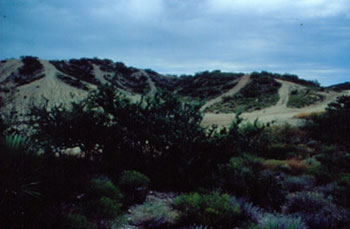
A heavily roaded landscape diminishes ecological sustainability,
degrades scenic qualities, and constrains recreational opportunities
on our public lands.
Today, within the National Forest System, there are still over 100 million acres of wilderness and roadless lands – a considerable portion of the 192 million acres managed by the Forest Service. But we cannot overstate the importance of this vanishing resource.

An ORV rider tears up a user-created
road in the Sky Island region.
Roadless areas are, by definition, un-fragmented lands that are free of roads. Typically, these areas are defined as parcels larger than 1,000 acres. They represent less than 5% of the continental U.S. landbase. Roadless Areas within National Forests represent about 2% of the same landbase.
In recent decades, the academic realms of ecology, wildlife biology, and conservation biology have recognized remaining roadless areas as one of the most important landscape features in conservation planning. In an increasingly urbanized and motorized environment, Americans are also demanding more wilderness experiences for recreational activities.
The ecological benefits of conserving remaining roadless areas, and working to create more, are comprehensive. These benefits include:
- Provide core habitat for over 220 species of federally listed Endangered and Threatened Species (25% of all listed wildlife species), including over 1900 Forest Service sensitive species.
- Landscape bulwarks against exotic species invasions. Roads and associated disturbances act as “biological highways” for invasive species spread.
- Protection of watersheds for aquatic species. Sedimentation from roads decreases habitat effectiveness for many riparian obligate and facultative species.
- Roadless areas decrease habitat fragmentation. Species from wolves and grizzly bears to owls and lizards respond negatively to lightly or heavily roaded landscapes. Road aversion, road attraction and roadkill, direct habitat loss, human-induced stress, and air/water/noise pollution are examples of impacts in roaded landscapes.
While we can find many benefits for the preservation of roadless areas for wildlife and plant species, it is important to stress the value of this dwindling resource for humans. As noted above, roadless and wilderness lands make up a small fraction of the U.S. landbase. Visitor days in these areas, however, have significantly increased in recent decades.
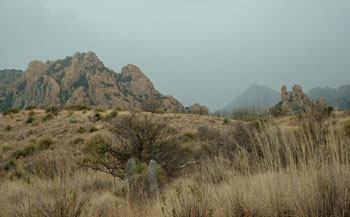
When the American public was polled in 2000,
76% of those polled expressed the desire to
permanently protect remaining roadless areas.
Wildland and wilderness experiences are in high demand – many existing wilderness areas are already attracting over-capacity visitor use. With the recent explosion in off-road vehicle use, people seeking solitude and non-motorized recreation are being pushed out of many public lands. This puts increasing pressure on nearby roadless areas, and highlights the need to protect those we have left.
On the Coronado and Apache National Forests, the Sky Island Alliance is now drafting a proposal that will protect over 700,000 acres from roads, logging, ORV’s, and other damaging industries.
In addition, wildlands free of roads also provide clean drinking water for urban populations, intact scenic landscapes, and opportunities for wildland-based tourism (bird watching in S. Arizona accounts for one of the region’s largest source of tourism dollars). It pays to protect.
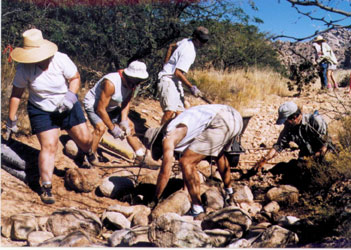
Sky Island volunteers work on constructing a road barrier
to close off illegal roads and allow the landscape to recover.
With the help of thousands of our members and volunteers, we work for the day when un-broken, wild landscapes may forever be inherited to future generations, when vibrant communities can co-exist in vibrant, healthy wildlands, and when our treasured natural heritage is ensured to accompany us into the future. Please look forward to an upcoming wilderness proposal this winter, and help us make this a reality.
For an update on the current status of the Clinton-era Roadless Rule, click here.
|

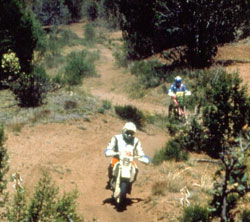
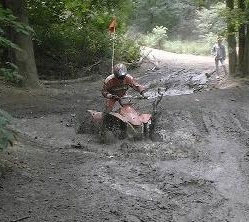






 Make your late winter and early spring outdoor plans here! Visit our comprehensive list of day outings, inventory trips, meetings, and upcoming AWC events for the latest in wilderness “happenings” around the state.
Make your late winter and early spring outdoor plans here! Visit our comprehensive list of day outings, inventory trips, meetings, and upcoming AWC events for the latest in wilderness “happenings” around the state. 
